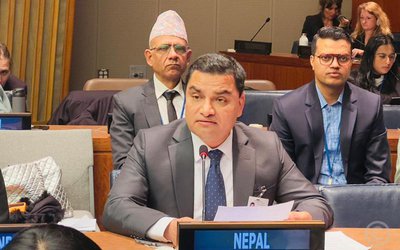
Akshai Chin( 5000m, pic) in the Ladakh area was the high- altitude, disputed area where the Chinese and Indian armies were locked in lethal battle in the rarefied atmospherein the 1961-62 war. Unfortunately many soldiersfrom the Indian army arrived at high altitude from the Indian plainswithout proper acclimatization andsuffered from the life-threatening forms of altitude sickness such as high altitude pulmonary edema ( HAPE) and high altitude cerebral edema( HACE). In addition HAPE and HACE were almost unknown diseases in the early 1960s. Indeed many of the Indian soldiers were misdiagnosed to have pneumonia due to the cold and treated with antibiotics which was unhelpful. In fact even when it was determined that this disease was not pneumonia but was due to water in the lungs, Indian doctors intuitively thought the water resulted due to a failing heart unable to pump blood efficiently in the cold and low-oxygenenvironment. Antibiotics were stopped and digoxin was used to flog the muscles of the heart. And powerful diuretics (like Lasix) were deployedfor edema. Unfortunately, none of these drugs ( antibiotics, digoxin, strong diuretics) are useful for HAPE. The Indianarmy which comprised of many Gurkha soldiers, suffered heavy losses.
From this tragic incident some of the most comprehensive field literature about altitude sickness emerged. The 1965 article about HAPE by Captain Menon in the New England Journal of Medicine is a classic work, and the study in the same journal in 1969 by General Inder Singh et al of almost 2000 soldiers fighting in this hostile terrain is clearly a tour de force. So what was the winning strategy of the Chinese in this war?
For one thing they were well acclimatized to high altitude. Unlike the Indian soldiers many of whom were literally flown up from New Delhi to the Ladakh area in summer clothes, the Chinese soldiers had a long history of fighting with groups such as the Tibetans at high altitude and appeared to know a thing or two about alpine warfare. They also wore well-padded clothes to prevent hypothermia. Unlike the Indian soldiers they were better rested and did not exert themselves excessively upon arrival to altitude, a key issue in acclimatization. These were important factors in deciding the outcome of the war.
Amazingly this lack of awareness about altitude illness continues to be a problem in the subcontinent in the same area.Two yearsago over a hundred Indian pilgrims died due to altitude sickness while visiting Sri AmarnathTemple ( 4000m) in Jammu and Kashmir.

Buddha Basnyat MD
Buddha Basnyat, MD, MSc, FACP, FRCP, Director of the Oxford University Clinical Research Unit-Patan Academy of Health Sciences, Kathmandu.
- Altitude Sickness
- Feb 20, 2018
- Post-earthquake Nepal: The Way Forward
- Dec 13, 2015
- The Annapurna Sanctuary
- Nov 29, 2015
- Diarrhea at the Summit
- Nov 08, 2015
- Altitude Sickness ( AMS, HAPE, HACE)
- Oct 15, 2015














